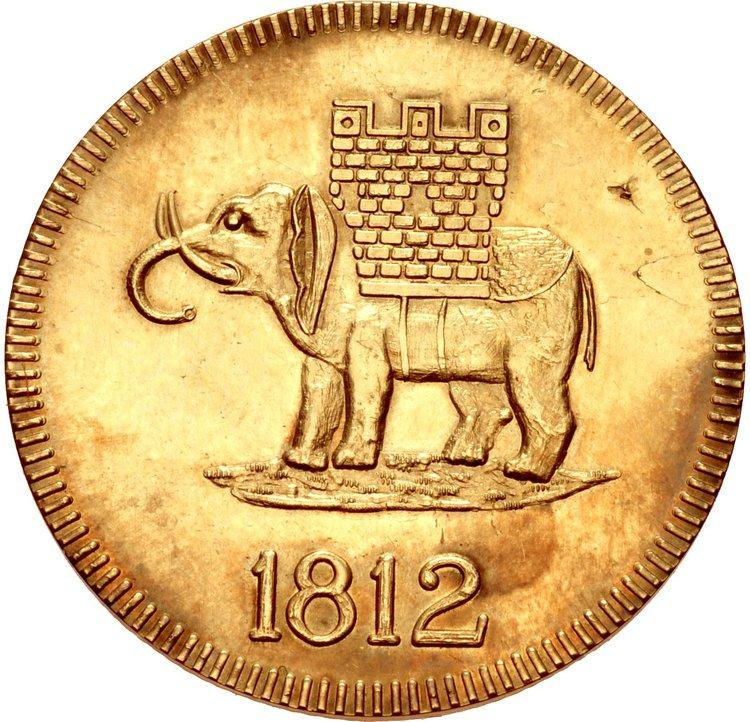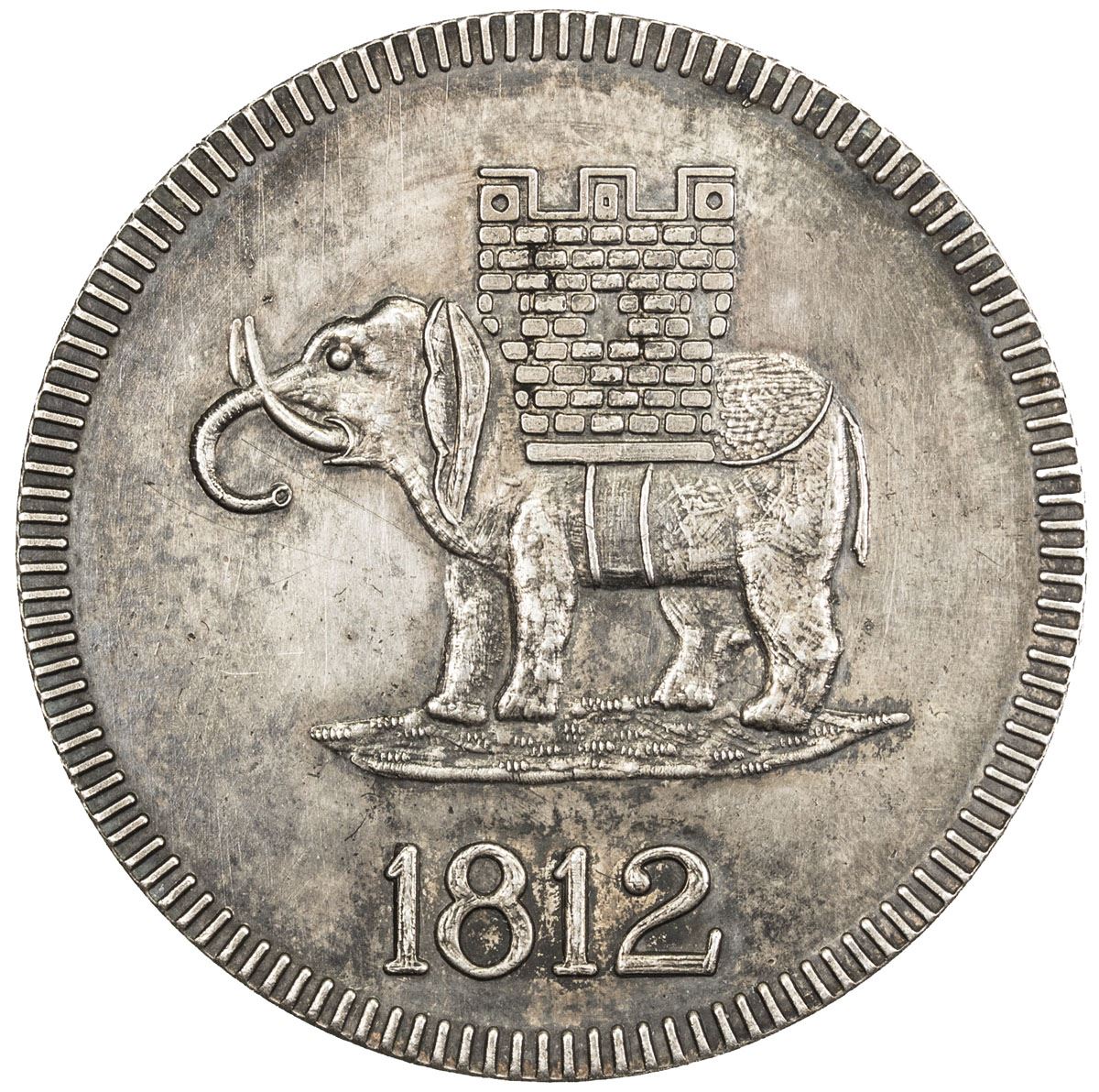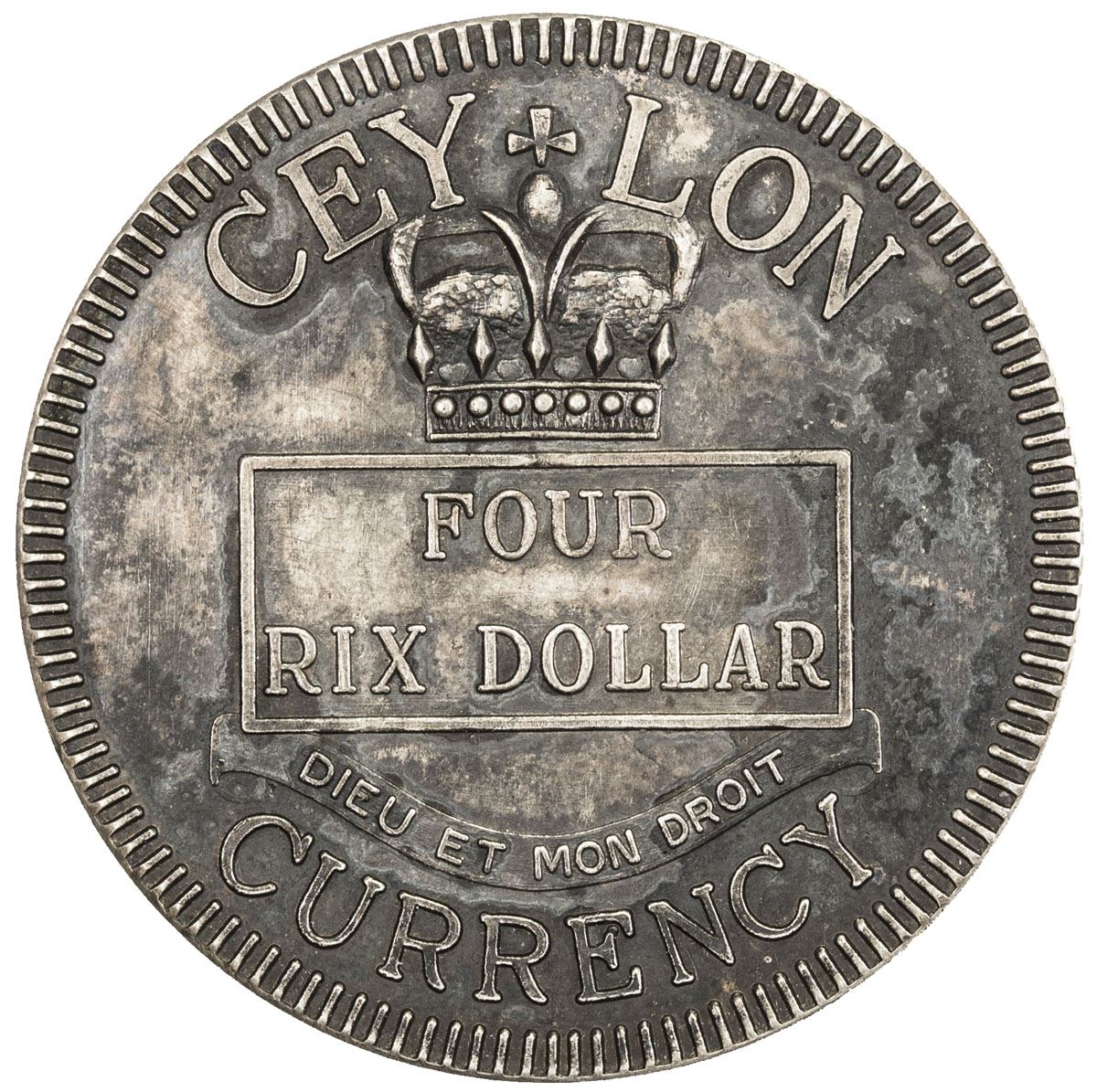1812 - Ceylon Government
Four Rix Dollar Fantasy
Four Rix Dollar Fantasy manufactured by Frank A. Lapa.
before 1972 May styled on the 1812 Ceylon Silver
Pattern.
The controversial dealer Frank Lapa who also published in 1968 an useful
book on 1055-1295 CE Copper Massa coins of Lanka, mistitled Kandy
Kings.
| SPECIFICATIONS |
| Denomination | Two Rix Dollar |
| Alloy | Gold |
| Diameter | 32.0 mm |
| Thickness | 1.? mm |
| Weight | 15.53 gms |
| Shape | Round |
| Edge | Plain |
| DieAxis | 180° |
|


|
|
| Denomination | Two Rix Dollar |
| Alloy | Silver |
| Diameter | 32.0 mm |
| Thickness | 1.? mm |
| Weight | 10.04 gms |
| Shape | Round |
| Edge | Plain |
| DieAxis | 180° |
|


|
| Ceylon KM-X6 |
Obverse : Elephant Facing left with straped oversize basket on
back with 1812 below the ground line within a dash circle.
Reverse : CEY LON on above broken by Cross
and CURRENCY below in arcs along perifery.
Crown above Panel with value in FOUR RIX-DOLLAR
Below in in banner DIEU ET MON DROIT (God and my right)
In 1977, the first example of this previously unknown gold 4-Rixdollar
pattern appeared in the offices of Abraham Kosoff (1912-1983), a
well-known rare coin dealer. While examples of the 1 and 2 Rixdollar
patterns - commissioned by Ceylon in 1812 and struck from dies made by
Thomas Wyon, Jr. at the Royal Mint in London - already were known,
the appearance of this particular coin caused a stir as to its authenticity.
Henry Grunthal (1905-2001), then curator of European and modern coins
at the American Numismatic Society and the one who researched the
coin, considered the piece to be authentic; he went so far as to
declare the gold 4 Rixdollar the Ceylonese Stella, a reference to the
famous gold US four dollar pattern of Charles E. Barber (A. Kosoff,
Authorities Authenticate Ceylon Pattern Four-Rix Dollar In Gold, Coin
World [17 May 1972], p. 2).
Less, than a month later, however, Coin World reported that the gold 4
Rixdollar pattern was found to be a modern fantasy of which 75 pieces
in a variety of metals were reportedly produced ( Recent Findings
Reveal Coin Modern Fabrication, Coin World [7 June 1972], p. 46).
Although the manufacturer of this coin was unknown at the time, it was
later discovered that it was produced by the coin dealer and author,
Frank A. Lapa (1931-1995), a known coin counterfeiter
(The E-Sylum, 2003 January 5,
V06n01a12)
and an individual with a notorious personal history
(The E-Sylum, 2006 July 30,
v09n31a32)
Auction Listings
- Gold: Richard L. Listner Collection, by St James's Ayuctions, LLC
in conjunction with Classical Numismatic Group (CNG) 2014 August 1st, London.
Lot 99
4 Rix Dollar estimate $500 sold for US$1,500
- Silver: Stephen Album Rare Coins Auction 29, Santa Rosa, California, 2017 Sept. 14
Lot 631
4 Rix Dollar sold for US$350(+BP+taxes)
The 600 dpi coin images from Auctions referenced displayed at 200 dpi.



